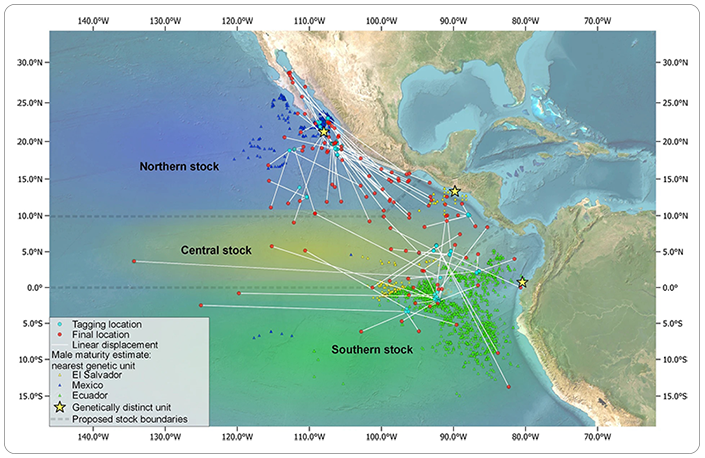2025-05-29 カリフォルニア大学サンディエゴ校(UCSD)

<関連情報>
- https://today.ucsd.edu/story/silky-shark-population-study-offers-clues-for-conservation
- https://link.springer.com/article/10.1007/s11160-025-09948-5
東太平洋におけるクロトガリザメ(Carcharhinus falciformis)の空間管理への情報提供 Informing the spatial management of Silky Shark (Carcharhinus falciformis) in the Eastern Pacific Ocean
Brendan S. Talwar,Brice X. Semmens,Alexandre Aires-da-Silva,Shane Griffiths,Jenn Humberstone,Melanie Hutchinson,Jon Lopez,Carolina Minte-Vera,Dan Ovando,Marlon Román-Verdesoto,Salvador Siu &Lyall F. Bellquist
Reviews in Fish Biology and Fisheries Published:30 April 2025
DOI:https://doi.org/10.1007/s11160-025-09948-5
Abstract
The Silky Shark (Carcharhinus falciformis) is highly vulnerable to population decline, yet leads shark bycatch in some of the world’s largest tuna fisheries. As such, this species provides an appropriate case study for regional fisheries management organizations—exemplified by the Inter-American Tropical Tuna Commission—to develop conceptual population assessment frameworks that integrate diverse data streams to elucidate population structure and dynamics of assessed species. Using genetic, movement, life history, and small- and large-scale fishery-dependent data from across much of the Silky Shark’s Pacific Ocean range, we found preliminary evidence for a three-stock model—southern, central, and northern—in the eastern Pacific Ocean (EPO). Length distributions of Silky Sharks varied with latitude and across fishery gears and strategies. The predominance of small juveniles, including neonates, caught on or near the continental shelf by small-scale fisheries and offshore by purse seines set on floating objects, including fish aggregating devices, suggested that Silky Sharks use both shelf-edge habitats and offshore areas as pupping and/or nursery areas. Finally, we showed that sex ratios favored females in oceanic and equatorial zones, where most Silky Shark bycatch in large-scale fisheries occurs. Our study serves as a roadmap to comprehensively understand spatial population dynamics of common bycatch species lacking a dispersive larval phase, such as elasmobranchs, by integrating genetic, biological, ecological, and fisheries data. Specifically, our work can inform stock assessments and management measures that may improve Silky Shark conservation in the EPO and elsewhere.


